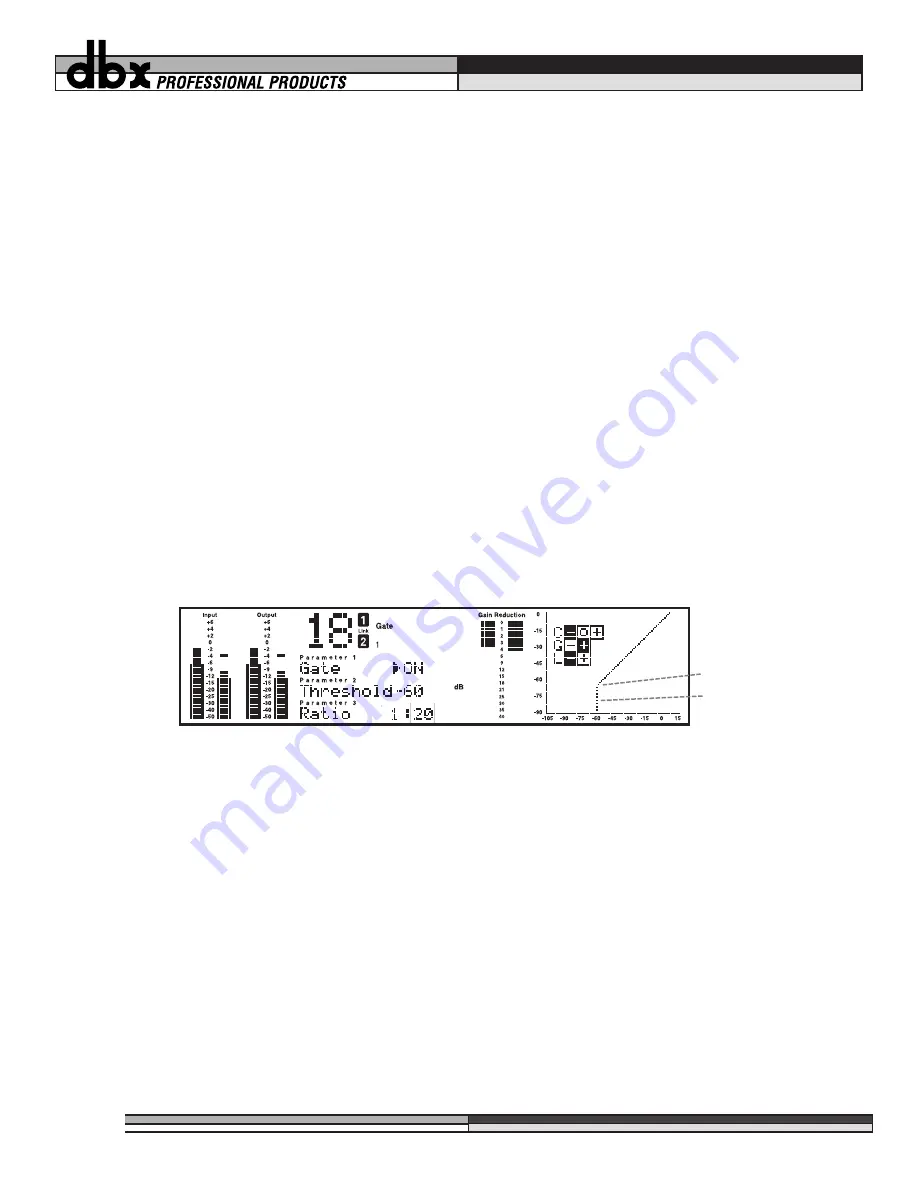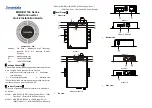
THE STORE BUTTON
Whenever a parameter has been changed, the
Store
button will light, prompting you that there have been
changes made to the setup. If you want to keep the changes, you must store the new setup. You may choose to
rename and save the setup in the setup library. Or you may choose to abandon your changes when you leave the
program for another one. Refer to the end of this section on page 20 for complete instructions for saving setups.
MOVING AROUND
Since there are only three parameters viewed at any one time it is necessary to have multiple “pages” of parame-
ters. The gate has three pages of parameters. For example, on the first page of the gate section there is: Gate
ON /OFF, Threshold, and Ratio. The next page can be seen by pressing the
NEXT PAGE
/
PREV PAGE
buttons.
The number of the current page is shown to the right of the program number and under the chain identifying
numbers in reversed-text. The parameters on page 2 are: Attack, Hold and Release. The third and last page has
Transient Capture Mode™ On / Off, and TCM Time. For a full explanation of Transient Capture Mode, see Section
6.
The
SELECT
button moves the cursor between the three lines of parameters on each page, and the
DATA
wheel
changes the parameter that is selected. Note that in order for any changes to be heard, the element must first be
in the “on” position.
EDITING GATES
Parameters of the Gate
The parameters included on the DDP for gating operations are as follows:
Off/on
: This is a bypass for the gate section. Turning it to “off” deactivates the minus (-) section of the threshold
meter, and the plus (+) sign is darkened, indicating that the gate is passing signal through, regardless of the other
gate settings.
Threshold range from -75dB to 0dB
: The threshold range goes from -75dB to 0dB. With the threshold set
towards -75dB, it takes less signal level to “open” the gate. A setting closer to 0dB requires more amplitude or
level to open the gate. As you move the threshold around, notice the behavior of the curve window. The “knee”
of the threshold moves up and down according to your setting. Moving the threshold “up” means it takes a louder
signal to exceed the threshold.
Ratio from 1:1 to 1:
∞
: The gate ratio sets the amount of gain reduction. (With a lower ratio setting, the gain
reduction is lower than a higher ratio.) For mild gating effects, or downward expansion, set the ratio around 1:2,
or for more extreme effects set it to 1:
∞
. For example, a setting of 1:2 means that for every 1dB that the signal is
below the threshold (say, 4, for example), the gate imposes 2dB of gain reduction on the signal (for a total of 8dB
in this example). As you move the ratio control around, notice the action of the curve in the curve window.
{{{{
||||
®
,,,,
yyyy
zzzz
14
Section 4: Editing / Saving / Recalling Programs
Figure 14: Gate parameters and curve
threshold knee
gate ratio















































